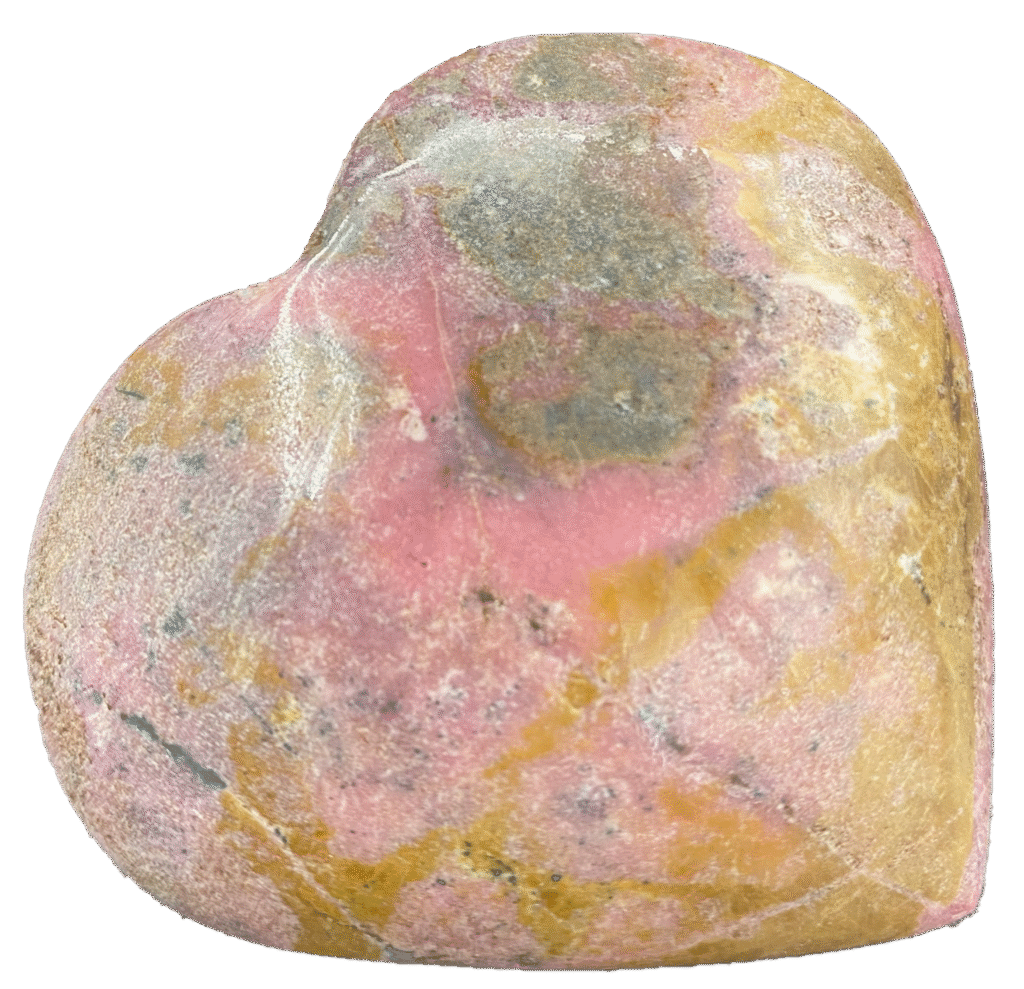
Rhodonite derives its name from the Greek word rhodon, meaning “rose”, in reference to its distinctive pink hue. Historically, it has also been called Orletz in Russia, where it was extensively mined. Some alternative names include manganese spar and ruby spar due to its composition and colour.
Composition, Physical Characteristics, and Varieties
Rhodonite is a manganese inosilicate mineral with the chemical formula (Mn,Fe,Mg,Ca)SiO₃. It typically forms in massive or granular habits and occasionally in tabular crystals. The mineral is well known for its pink to red colour, which is often veined with black manganese oxides.
Varieties include:
- Standard Rhodonite: Pink with black veining.
- Fowlerite: Zinc-rich variety found in Franklin, New Jersey.
- Translucent Rhodonite: Highly sought after for jewellery due to its glassy appearance.
Geographical Locations
Rhodonite is found in various locations worldwide. Notable deposits include:
- Russia: The Urals, particularly around Sverdlovsk, where it was historically used in decorative arts.
- United States: Found in Massachusetts, New Jersey, and Montana.
- Canada: British Columbia yields high-quality specimens.
- Sweden: Notable deposits exist in Långban.
- Australia: Occurs in Broken Hill, New South Wales.
- Brazil, Peru, Madagascar, and Argentina also produce fine examples.
Archaeological and Significant Finds
Rhodonite has been used in Russia since the 18th century for ornamental and architectural purposes. Large blocks were crafted into vases, jewellery boxes, and even sarcophagi, such as the one in St. Petersburg’s Peter and Paul Cathedral. In the 19th century, the Russian aristocracy favoured rhodonite in cameos and decorative inlays.
Historical and Current Usage
Historically, rhodonite was prized for its beauty and durability. Russian craftsmen frequently used it for mosaics, while Indigenous cultures in North America are believed to have carved it into amulets. Today, rhodonite is popular in jewellery, carvings, and metaphysical applications.
Interesting Facts
- Rhodonite is the national stone of Russia.
- Some rare specimens display chatoyancy, a cat’s eye effect.
- It was traditionally gifted to travellers for protection and safe passage.
Folklore, Legends, and Tales
Russian legend suggests that rhodonite was a talisman of love and harmony, strengthening relationships. In ancient times, warriors allegedly carried rhodonite to boost courage and resilience. In some Indigenous traditions, it was regarded as a stone of healing and emotional balance.
Mystical Healing Properties
Rhodonite is believed to encourage love, compassion, and emotional healing. It is said to:
- Promote forgiveness and reconciliation.
- Alleviate emotional wounds and past traumas.
- Enhance self-worth and reduce anxiety.
- Aid in grounding and balancing emotions.
Astrology and Zodiac Links
Rhodonite is associated with Taurus, offering stability and inner peace. Some astrologers also link it with Scorpio, suggesting it aids transformation and emotional strength.
Chakra System Connections
Rhodonite resonates primarily with the Heart Chakra, fostering emotional healing, self-love, and compassion. Some believe it also stimulates the Root Chakra, promoting stability and grounding energy.
Use as a Birthstone and for a Wedding Anniversary
While not a traditional birthstone, rhodonite is often associated with those born in April as an alternative crystal for emotional growth. It is sometimes gifted for the 10th wedding anniversary, symbolising enduring love and harmony in a relationship.
